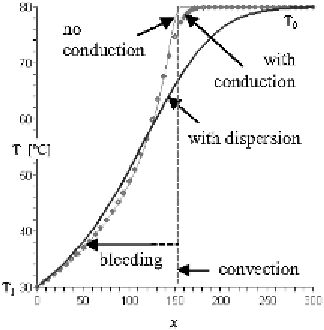Geoscience Reference
In-Depth Information
geohydrosphere including dissolution of silicates, oxides, sulphides, and carbonates
(weathering), and form a variety of minerals, notably sulphides, carbonates, and
generate hydrocarbons. As a consequence, these reactions change the subsoil
drastically.
In this respect, it is important to know whether certain soil pollution can be a
part of a 'natural' cycle, and is therefore in principle not a negative aspect of the
soil condition. Bacteria and archea play a main role in the present day cycles of
oxygen, nitrogen, sulphur and carbon. Oxygen is important for biodegradation of
pollutants like carbohydrates and organo-chlorine matter.
Since bacteria also contribute to soil structure (e.g. dissolution and cementation)
their activity can be used to modify soil properties to meet our needs. There is great
potential in using natural processes without harm (building with nature). In some
cases, there is also potential to recycle waste materials and turn them into new
construction materials. In this respect, SmartSoils® are technologies that can direct
the localisation and rate of natural soil processes that influence soil properties. By
influencing these processes, there is real potential to alter the properties of the soil
(permeability, porosity, stiffness and strength, see Chapter 13
E
).
D
HEAT
/
COLD TRANSPORT IN SOIL
Storage of solar energy and industrial heat at shallow depth and using it for
heating is known as heat-and-cold storage. At greater depth, in search for
sustainable energy, the exploitation of geothermal energy from underground hot
reservoirs becomes opportune. The process of heat/cold transport in saturated
porous media involves conduction, convection, dispersion and bleeding
(conduction into the surroundings). Convection is the heat transport by the pore
fluid motion and bleeding is the heat/cold loss by conduction into adjacent semi-
pervious formations.
temperature
T
1
from
t
= 0
temperature
T
1
from
t
= 0
temperature
T
1
from
t
= 0
temperature
T
1
from
t
= 0
T
0
T
0
T
0
T
0
z
z
z
z
overburden
overburden
overburden
overburden
w
o
w
o
w
o
w
o
x
x
x
x
H
H
H
H
T
0
T
0
T
0
T
0
T
1
T
1
T
1
T
1
q
q
q
q
q
q
q
q
q
reservoir
reservoir
reservoir
reservoir
reservoir
(a) Schematisation (b) Cold front in the reservoir
Figure 14.6 Cold transport in a uniform sand layer with constant groundwater flow




























































Search WWH ::

Custom Search